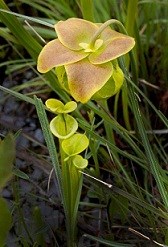
You’re on a trail flush with visual delight: a crowded canopy, an impressive understory, a crazy mishmash of ground cover. Through this dense sea of green you occasionally spy the remains of a chimney or a stone foundation. Perhaps an old roadbed: Where did it go? Who used it? Did the kids cruise their buggies here on Saturday nights?
So many questions, so few answers.
Usually. But not this Saturday, when Richard LeBlond and Ann Cottle should have plenty to say on the third in our series of Mountains-to-Sea Trail hikes celebrating the statewide path’s new Coastal Crescent Route.
“How long is the museum tour?” I ask Ann Cottle, director of the Penderlea Homestead Museum in rural Pender County, northwest of Wilmington.
She chuckles. “I grew up here, I’ve lived here since I was 4,” she says of the first of 152 homestead communities developed nationwide as part of President Roosevelt’s New Deal program. “The tour is over when you’re tired of hearing me talk.”

Richard LeBlond has a long history of sussing out complex ecosystems, ranging from Glacier National Park to Cape Cod National Seashore to Spain and Greece. He retired from the N.C. Natural Heritage Program in 2007 after 13 years helping to catalog the state’s natural areas. Currently, he’s an associate of the University of North Carolina Herbarium. His role on Saturday’s hike will be helping to make sense of the BW Wells Savannah Preserve, home to more than 245 native grasses, shrubs, trees and wildflowers on the compact 177-acre preserve.
Both Penderlea and the BW Wells Savannah Preserve are along a 70.6-mile stretch of the MST’s Coastal Crescent Route dubbed the Land of History. This particular 3.3-mile stretch is part of our MST Month tour because of the history, natural and human, found along the way.
On a thru-hike of the 1,150-mile MST, which spans the state from Clingman’s Dome in the Smokies to Jockey’s Ridge on the Atlantic, stops at these and other historic sites (Kelly Historical Museum, Canetuck Rosenwald School, Moores Creek Battlefield) would be de rigueur. After all, the over riding goal of the Mountains-to-Sea Trail is to expose pedestrians to as much of North Carolina as possible. Because we only have a day, however, we’re limiting Saturday’s hike to BW Wells and Penderlea, which are less than 3 1/2 miles apart down the gravel Pelham Road.
BW Wells Savannah Preserve
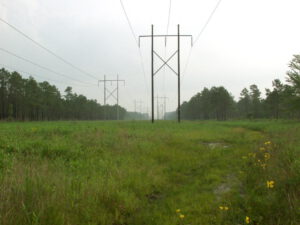
Think of a savannah and you typically think of a dry grassland with few trees. That’s not the case at BW Wells.
“Wet pine savannahs generally host longleaf pine and pond pine in a sparse canopy along with a diverse herbaceous ground cover of grasses, sedges and numerous wildflowers,” states a brochure on the preserve from the N.C. Coastal Land Trust. The trust purchased 117 acres of the property in 2002, adding 60 acres in 2009.
The preserve is named for Dr. Bertram W. Wells, an N.C. State University professor who dedicated his life to identifying the natural wonders of North Carolina. Among other accomplishments, he spent years studying the “Big Savannah,” a 1,500-acre treeless savannah located not far from the preserve that now bears his name.
Why are we visiting the smaller BW Wells Savannah, which currently only has 10 to 12 acres of true wetland pine savannah?
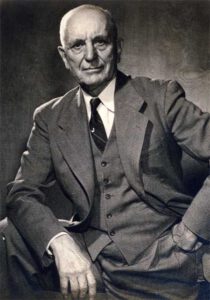
Because efforts by Wells and others to save the Big Savannah, which by the 1950s had emerged as a tourist draw for botanists and wildflower enthusiasts worldwide, fell short. A farmer purchased the land in the late 1950s, drained it, and used it for crops.
Fortunately, the N.C. Coastal Land Trust was around to save the BW Wells tract, which is sometimes referred to as the “Ghost of Big Savannah.”
Among other things, LeBlond will help hikers differentiate between longleaf and pond pines, between sweet bays and loblolly bays, between yellow and purple pitcher plants, and the various grasses, orchids, wildflowers and ferns on the land. His field work in the area helped to confirm an ecological connection with the Big Savannah.
Learn more about the BW Wells Savannah Preserve in this Educator’s Guide prepared by the N.C. Coastal Land Trust.
Penderlea Homestead Museum
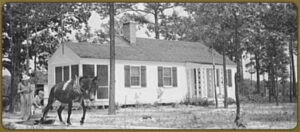
When you think of President Franklin Delano Roosevelt’s New Deal and his effort to pull the country out of the Great Depression, you typically think of the Civilian Conservation Corps. Launched in 1933, the CCC put a half million men to work in its first two years, and in its not-quite-10-year run built more than 800 parks nationwide, a legacy we continue to benefit from today.
But there were numerous other such programs created to help a struggling nation. One was a series of 152 homestead communities scattered around the nation, the first of which was Penderlea.
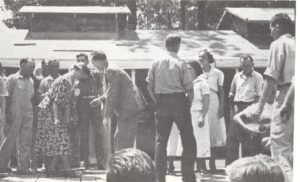
Conceived by controversial Wilmington developer and agriculturalist Hugh MacRae, Penderlea was a “farm city” built from scratch on 4,700 acres of land deemed ideal for growing truck crops (vegetables grown on a large scale for commercial sale). A centralized community — a school, general store, health clinic, cannery, community center — served 300 people recruited to farm 10-acre tracts. Those recruited for the project were often farmers whose own farms were deemed submarginal.
Penderlea thrived in the 1930s, fulfilling its goal of creating jobs and providing produce to surrounding communities.
The museum, the surviving buildings and Ann Cottle’s first-hand account (chronicled in her book, “The Roots of Penderlea”) should provide a rare insight into a slice of history with which few are familiar.
Learn more about the Penderlea Community here.
* * *
About Saturday’s hike
GetHiking! on the Mountains-to-Sea Trail’s Coastal Crescent Route: BW Wells Savannah Preserve / Penderlea Homestead Museum
When: Saturday, May 28, 10 a.m.
Where: Meet at the Penderlea Homestead Museum, 284 Garden Road, Willard, N.C.
For more information and to sign up, visit our GetHiking! Triangle Meetup page, here.
